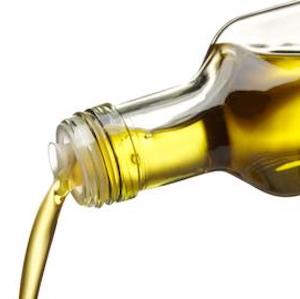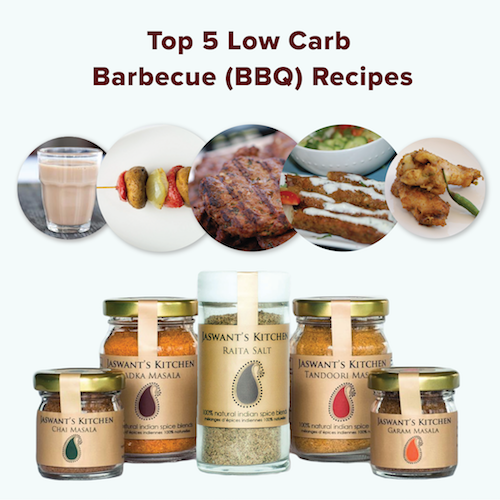Five Nutritious Alternatives to Olive Oil You Might Not Have Tried Yet


If care about your health, you're probably always looking for ways to add a little more healthy goodness to your home cooked meals. An easy way to add some more nutritional value to a dish is to switch up the oil that you use in your cooking. Many people stick only to extra-virgin olive oil or canola oil. Here’s a crash course in 5 alternatives that can replace your run-of-the-mill oils while baking, dressing, or cooking any meal of the day.
1. CAMELINA OIL
This oil is made from the seeds of the Camelina plant, a flowering plant native to Eastern Europe and Canada. Camelina oil was largely forgotten about during the industrial age of agriculture starting in the 1940s, because it is more expensive to grow and press than the cheap, mass-produced hydrogenated oils we’re so used to. But thanks to the modern-day green movement and a more widespread wish for healthy, wholesome, and naturally-grown foods and ingredients, Camelina oil is beginning to pop up more and more on shelves around the world.
The Pros:
You can buy it Canadian, from Three Farmers, a sustainable and eco-conscious company based in Saskatchewan, so you can fry up those french fries guilt-free. Camelina seeds are typically pressed in a chemical-free process, as opposed to the hexane-extraction method used by other oils. It is also high in Omega-3 fatty acids, which are good for your heart and body. and has one of the highest smokepoints, much higher than olive oil, so no need to worry about cranking your stovetop as high as it can go.
What to Watch Out For:
It’s strong, nutty flavour, while delicious, is definitely noticeable, so make sure to use it in dishes that complement the flavour. Avoid baking with it, and instead use it for fragrant, savory dishes. The flavour compliments Indian dishes quite well, so next time you try one of our recipes, reach for the Camelina Oil.
2. AVOCADO OIL
This oil is quite similar to olive oil, in that it is rich in monosaturated fatty acids and low in saturated fats. High in the good fats, low in the bad ones.
The Pros:
It has a high smoke point, like a few other oils on this list, which is great for cooking on a high heat and frying. It has a subtle avocado flavour, and depending on how refined it is, its flavour changes in strength. It’s also great for face masks and cosmetic uses because it is easily absorbed into the skin and its high levels of vitamin E, which is great for the hair and skin. We love the mild flavour of the avocado oil produced by Chosen Foods.
What to Watch Out For:
This oil can sometimes be quite expensive, costing almost twice as much as many olive oil brands. As well, because avocados are not native to Canada, this oil travels across the world to get to us, so doesn’t make as eco-friendly an option than more locally produced oils, like Canadian Camelina oil.
3. WALNUT OIL
Walnut oil is a lesser known, more gourmet oil, pressed from walnuts, which are a healthy source of omega-3 fatty acids.
The Pros:
Walnuts are high in calcium, iron, zinc and vitamins B-1, B-2, and B-3, and E. B vitamins are great for keeping energy levels up, and regular consumption of walnuts or walnut oil has been shown to reduce the risk of heart disease and lower cholesterol. And, as a bonus, walnuts are delicious. Awesome!
What to Watch Out For:
Because of its delicate makeup, this oil is not one to cook with; when heated, its nutty flavour can turn bitter. Therefore, it’s an oil best used for salad dressings and drizzling over already-cooked meals. It’s also quite expensive, another reason why it isn’t a universal, use-for-everything oil.
4. COCONUT OIL
The name is pretty self-explanatory: Coconut oil is an oil pressed from matured coconuts, an amazingly tasty and versatile palm fruit.
The Pros:
Coconut oil is rich in saturated fats, which sounds like a bad thing, but, in moderation, is just fine for your body. In fact, the saturated fatty acids found in coconut oil are metabolized differently than other, less healthy fats. The fats found in coconut oil are quickly metabolized for energy and can have positive effects on your brain functions as well. Due to the high saturation of fatty acids, it has an extremely high melting and smoking point, and its room temperature form is a solid mass rather than a liquid oil (Ever wonder how that magic, chocolate shell hardens so quickly on your ice cream cone? Coconut oil!). This also means it lasts much longer on your shelf than any other cooking oils without going rancid.
What to Watch Out For:
Coconut oil can taste a lot like - you guessed it - coconuts, so if you don’t like the slightly sweet and nutty taste of coconuts, steer clear of this oil. However, it works great with Thai dishes like yellow and green curries that include coconut milk, and slightly sweeter dishes like pancakes or french toast - especially thanks to its high smoke point, which can create a deliciously crunchy and crispy exterior on whatever you’re searing or frying. Yum!
5. APPLESAUCE
This is a trick answer, because, as we all know, applesauce is not an oil at all. But we’ve added it in our list for the heavy bakers out there, because applesauce makes a super healthy and tasty oil substitute in baking things like cakes and cupcakes! Simply substitute equal parts applesauce in place of the oil.
The Pros:
Applesauce can do the work of oil in baking - Oil is usually used to bind together all the other ingredients and keep the batter nice and moist throughout the baking process. Applesauce works great in dense baked goods like banana breads, or whole wheat and bran muffins and cakes. Slight changes in texture or density in heartier treats don’t matter quite as much as they do in dainty souffles or finicky flake pastries. Applesauce can create a heavier, gummier texture in baked goods versus the light, flaky texture butter or canola oil usually creates, but since it’s so much healthier, the change in texture can be totally worth it, depending on what you’re making.
What to Watch Out For:
Well, since it’s not actually a cooking oil, we suggest you don’t try sauteeing any vegetables in it!
Haven't tried our Jaswant's Kitchen Spice Blends yet? Go ahead, order our Indian Cooking Starter Kit. We're so confident you'll love it, we'll give your money back if you're unhappy for any reason.
Also in Blog

Legumes, lentils and pulses. What's the difference?
What are Lentils?
Lentils are considered pulses (the edible seed from legume pods) that are easy to prepare, inexpensive and provide many nutrients such as protein, fibre, vitamin and minerals. Lentils come in many varieties that differ in colour, texture, taste, and uses. They are also commonly sold in grocery stores, where they can be found in whole or split form, and packaged as dried or canned.

Top 5 Low Carb Barbecue (BBQ) Recipes on SwitchGrocery
We are so excited to announce that our spice blends and drink mixes: Tandoori Masala, Tadka Masala, Garam Masala, Raita Salt and Chai Masala are now available to purchase from SwitchGrocery! To celebrate our partnership, SwitchGrocery has featured 5 amazing low carb recipes WITH MACROS that you can make using our spices with meat from truLOCAL, an online local meat delivery company!

